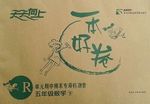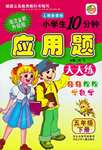The bedroom door opened and a light went on, signaling
an end to nap time.The toddle(初学走路的婴儿),
sleepy-eyed, clambered to a swinging stand in his crib.He smiled, reached out to his father, and uttered what
is fast becoming the cry of his generation: "iPhone!"
Just
as adults have a hard time putting down their iPhones, so the device is now the
Toy of Choice for many 1-, 2- and 3-year-olds.The
phenomenon is attracting the attention and concern of some childhood
development specialists.
Natasha Sykes, a mother of two in Atlanta, remembers
the first time her daughter, Kelsey, now 3 but then barely 2 years old, held
her husband's iPhone."She pressed the button and it lit up.I just remember her eyes.It was
like 'Whoa!' "The parents were charmed by their daughter's fascination.But then, said Ms.Sykes (herself a Black Berry user), "She got serious about the phone." Kelsey would ask for it.Then she'd cry for it."It
was like she'd always want the phone," Ms.Sykes
said.
Apple, the iPhone's designer and manufacturer, has
built its success on machines so user-friendly that even technologically
blinded adults can figure out how to work them, so it makes sense that
sophisticated children would follow.Tap a picture
on the screen and something happens.What could be
more fun?
The sleepy-eyed toddler who called for the iPhone is
one of hundreds of iPhone-loving toddlers whose parents are often proud of
their offspring's ability to slide fat fingers across the gadget's screen and
pull up photographs of their choice.
Many iPhone apps on the market are aimed directly at
preschoolers, many of them labeled "educational," such as Toddler
Teasers: Shapes, which asks the child to tap a circle or square or triangle;
and Pocket Zoo, which streams live video of animals at zoos around the world.
Along with fears about dropping and damage, however,
many parents sharing iPhones with their young ones feel guilty.They wonder whether it is indeed an educational tool,
or a passive amusement like television.The American
Academy of Pediatrics is continually reassessing its guidelines to address new
forms of "screen time." Dr.Gwenn Schurgin O'Keeffe, a member of the academy's
council, said, "We always try to throw in the latest technology, but the
cellphone industry is becoming so complex that we always come back to the table
and wonder- Should we have a specific guideline for them?"
Tovah P. Klein, the director of a research center for
Toddler Development worries that fixation on the iPhone screen every time a
child is out with parents will limit the child's ability to experience the
wider world.
As with TV in earlier generations, the world is
increasingly divided into those parents who do allow iPhone use and those who
don't. A recent post on UrbanBaby.com, asked if anyone had found that their
child was more interested in playing with their iPhone than with real toys. The
Don't mothers said on the Website: "We don't let our toddler touch our
iPhones ... it takes away from creative play." "Please ... just say
no. It is not too hard to distract a toddler with, say ... a book."
Kathy Hirsh-Pasek, a psychology professor who
specializes in early language development, sides with the Don'ts. Research
shows that children learn best through activities that help them adapt to the
particular situation at hand and interacting with a screen doesn't qualify, she
said.
Still, Dr. Hirsh-Pasek, struck on a recent visit to
New York City by how many parents were handing over their iPhones to their
little children in the subway, said she understands the impulse (冲动). "This is a magical phone," she said.
"I must admit I'm addicted to this phone."
1.The first paragraph in the passage intends to
______.
A.get us to know a cute
sleepy-eyed child in a family
B.show us how harmful the
iPhone is
C.lead us to the topic of
the toddlers' iPhone-addict
D.explain how iPhone
appeals to toddlers
2.According to the author, iPhones are popular with
both adults and young kids because they are______.
A.easy to
use
B.beautiful in appearance
C.cheap in price
D. powerful in battery volume
3.The underlined word "them" in the seventh
paragraph refers to ______.
A.televisions B.cellphones
C.iPhones D.screens
4.The tone of the author towards parents sharing
iPhones with their children is ______.
A.negative B.subjective
C.objective D.supportive
5.The passage mainly tells us ______.
A.children's iPhone addict
is becoming a concern
B.iPhone is winning the
hearts of the toddlers
C.Apple is developing more
user-friendly products
D.ways to avoid children's
being addicted to iPhone games
 ber 2008 that safety rules were out of date, and strong earthquakes would cause a “serious problem” for the power stations.
ber 2008 that safety rules were out of date, and strong earthquakes would cause a “serious problem” for the power stations. possible nuclear meltdown in Japan
possible nuclear meltdown in Japan
 天天向上一本好卷系列答案
天天向上一本好卷系列答案 小学生10分钟应用题系列答案
小学生10分钟应用题系列答案